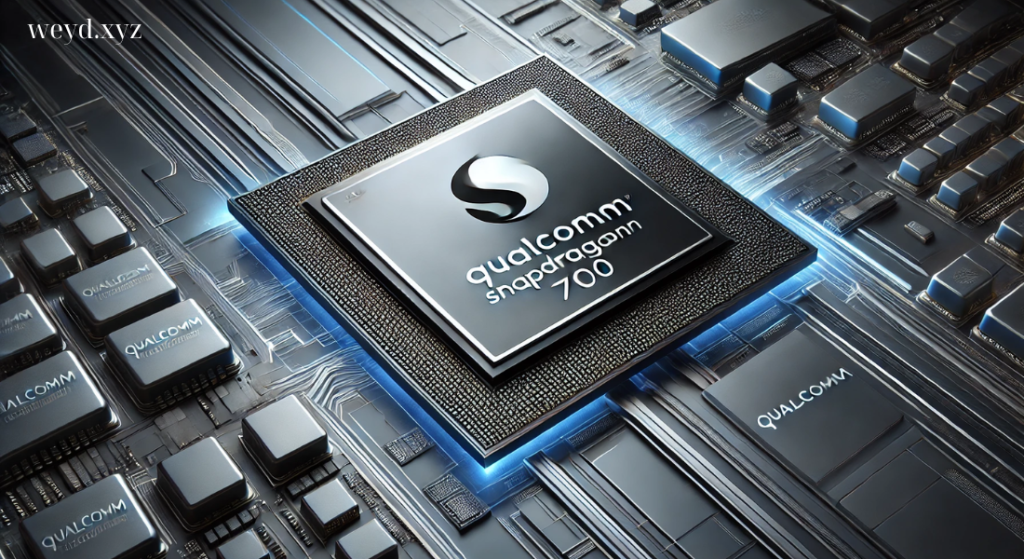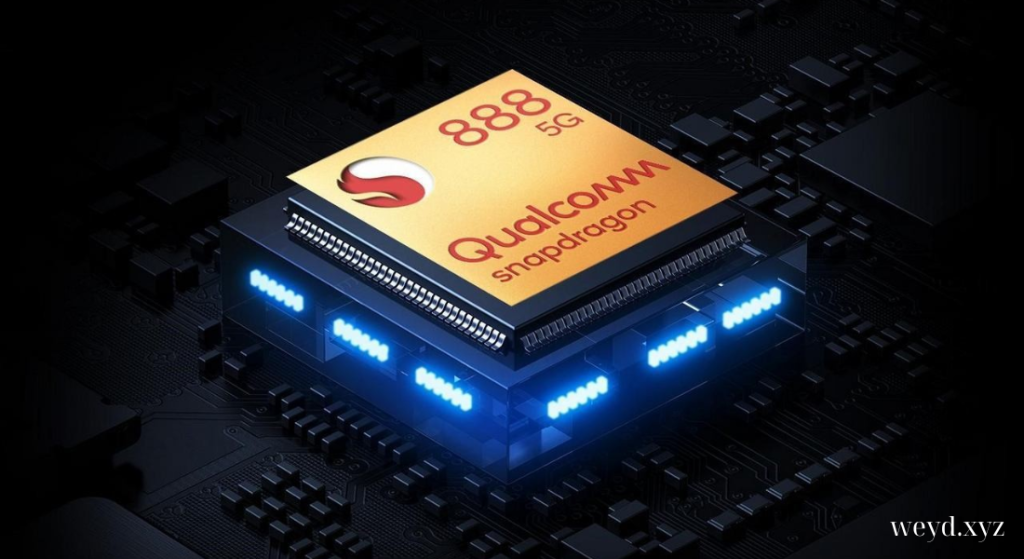Qualcomm Snapdragon processors have become synonymous with cutting-edge mobile technology. Since their inception, Snapdragon SoCs (System on Chip) have powered an extensive range of devices, from smartphones to laptops, wearables, and automotive systems. This article delves into the key features of Qualcomm Snapdragon processors, exploring how they drive innovation across various industries and enhance user experiences.
Overview of Qualcomm Snapdragon
Qualcomm, a leader in semiconductor technology, introduced the Snapdragon brand in 2007. The Snapdragon family encompasses a wide range of processors designed for mobile and embedded devices. Snapdragon processors integrate various components, including CPUs, GPUs, modems, and other essential hardware, into a single chip. This integration allows manufacturers to create powerful and efficient devices that meet the demands of modern users.
The Evolution of Snapdragon Processors
The Snapdragon series has undergone significant evolution over the years, adapting to the rapid advancements in technology and user expectations. Each new generation of Snapdragon processors brings enhancements in performance, power efficiency, and connectivity. As mobile technology evolves, so too do the features of Snapdragon processors, ensuring they remain at the forefront of innovation.
Key Features of Qualcomm Snapdragon Processors
Qualcomm Snapdragon processors are packed with features that contribute to their popularity and effectiveness. Below are some of the key attributes that distinguish Snapdragon SoCs:
1. High Performance
At the core of Snapdragon processors lies exceptional processing power. Most Snapdragon SoCs feature multi-core CPU architectures, allowing for efficient multitasking and responsive performance. The use of high-performance Kryo CPU cores ensures that Snapdragon processors can handle demanding applications, gaming, and intensive tasks without compromising speed or responsiveness.
2. Advanced Graphics Capabilities
Snapdragon processors integrate powerful Adreno GPUs that deliver stunning graphics performance. This capability enhances gaming experiences, allowing for high frame rates, detailed visuals, and smooth gameplay. Whether users engage in mobile gaming or graphic-intensive applications, Snapdragon’s graphics capabilities ensure an immersive experience.
3. Integrated 5G Connectivity
With the rollout of 5G networks, Qualcomm has positioned its Snapdragon processors as leaders in enabling next-generation connectivity. Many Snapdragon SoCs come with integrated 5G modems, allowing devices to take full advantage of ultra-fast download and upload speeds. This integrated approach simplifies device design, reducing the need for additional components while ensuring robust connectivity.
4. Enhanced AI Processing
Artificial intelligence has become a crucial aspect of modern computing, and Snapdragon processors are equipped to handle AI tasks efficiently. The AI engine within Snapdragon SoCs supports a variety of applications, from camera enhancements to natural language processing. By leveraging on-device AI capabilities, Snapdragon processors can offer features such as real-time image processing, voice recognition, and personalized user experiences.
5. Energy Efficiency
As power consumption becomes increasingly important in mobile devices, Qualcomm has prioritized energy efficiency in its Snapdragon processors. By employing advanced manufacturing processes and optimizing power management, Snapdragon SoCs can deliver high performance without draining battery life. This focus on energy efficiency is crucial for extending battery life in smartphones, tablets, and other mobile devices.
6. Robust Security Features
In an era where data security is paramount, Qualcomm has integrated robust security features into its Snapdragon processors. Many Snapdragon SoCs come equipped with hardware-based security measures, such as secure boot, encryption, and trusted execution environments. These features help protect sensitive user data, ensuring secure transactions and communication across devices.
7. Support for Multiple Camera Systems
Snapdragon processors often support advanced camera technologies, making them a popular choice for smartphone manufacturers. With support for multiple camera systems, high-resolution sensors, and features like computational photography, Snapdragon SoCs enable users to capture stunning images and videos. Features such as 4K video recording, HDR support, and improved low-light performance enhance the overall photography experience.
8. Versatile Connectivity Options
Beyond 5G, Snapdragon processors support various connectivity options, including Wi-Fi, Bluetooth, and NFC. This versatility ensures that devices can connect to different networks and peripherals, enhancing user convenience. Qualcomm’s Wi-Fi 6 and Bluetooth advancements allow for faster and more reliable connections, improving the overall user experience.

Top Qualcomm Snapdragon Processors
Several Qualcomm Snapdragon processors stand out in the market, each catering to different user needs and device requirements. Below are some of the top Snapdragon processors currently available:
1. Snapdragon 888
The Snapdragon 888 is a flagship processor known for its high performance and advanced features.
Key Features
- Octa-Core Architecture: It features a tri-cluster architecture with one high-performance Kryo 680 core, three mid-tier cores, and four efficiency cores.
- Integrated 5G Modem: The Snapdragon X60 modem enables fast 5G connectivity with improved coverage and efficiency.
- Advanced AI Engine: The AI engine enhances various applications, including photography, gaming, and voice recognition.
Applications
Manufacturers widely use the Snapdragon 888 in flagship smartphones and premium devices, delivering exceptional performance and connectivity.
2. Snapdragon 870
The Snapdragon 870 offers high performance for mid-range devices.
Key Features
- Octa-Core CPU: It features a Kryo 585 CPU, delivering impressive speed for multitasking and gaming.
- Enhanced Gaming Capabilities: The Adreno 650 GPU ensures high frame rates and improved graphics performance.
- 5G Connectivity: The integrated Snapdragon X55 modem supports robust 5G connectivity.
Applications
Developers often use the Snapdragon 870 in high-end smartphones, providing a flagship experience at a more accessible price.
3. Snapdragon 778G
The Snapdragon 778G targets the mid-range smartphone market.
Key Features
- Octa-Core Architecture: It features a combination of high-performance and efficiency cores for balanced performance.
- Adreno 642L GPU: This GPU delivers excellent graphics performance, enhancing gaming and multimedia experiences.
- AI Engine: The AI capabilities improve camera performance and support advanced imaging features.
Applications
Manufacturers commonly use the Snapdragon 778G in mid-range smartphones, providing access to advanced features without the flagship price.
4. Snapdragon 460
The Snapdragon 460 serves as a solid entry-level processor.
Key Features
- Octa-Core CPU: It features an octa-core CPU architecture, providing adequate performance for everyday tasks.
- Adreno 610 GPU: This GPU supports casual gaming and multimedia playback.
- AI Capabilities: The integrated AI engine enhances user experiences through features like voice assistants and camera improvements.
Applications
Engineers widely use the Snapdragon 460 in budget-friendly smartphones and entry-level devices, offering reliable performance at an affordable price.
5. Snapdragon 410E
The Snapdragon 410E is tailored for embedded systems and IoT applications.
Key Features
- Quad-Core CPU: It features a quad-core CPU architecture, delivering efficient performance for embedded applications.
- Integrated Adreno GPU: This GPU enables basic graphics rendering for user interfaces.
- 4G LTE Support: The Snapdragon 410E supports 4G LTE connectivity for IoT devices.
Applications
Developers use the Snapdragon 410E in various embedded systems and IoT applications, providing a powerful and efficient platform for connected devices.
The Future of Qualcomm Snapdragon Processors
As technology continues to advance, Qualcomm remains committed to driving innovation in the mobile semiconductor space. The increasing demand for high-performance processors, enhanced connectivity, and advanced AI capabilities will shape the future of Snapdragon products.
1. Expanding 5G Adoption
With 5G technology becoming mainstream, Qualcomm is positioned to lead the way in providing processors that support ultra-fast connectivity. The integration of 5G modems into Snapdragon processors will continue to simplify device design and enhance user experiences across various applications.
2. Advancements in AI
The rise of artificial intelligence will further influence the development of Snapdragon processors. Qualcomm will likely focus on enhancing AI capabilities, allowing for more efficient on-device processing and improved user experiences across applications.
3. Growing IoT Applications
The Internet of Things continues to expand, creating opportunities for Snapdragon processors in various industries. Qualcomm will focus on developing energy-efficient processors that cater to the unique requirements of IoT devices, enabling smarter and more connected environments.
Conclusion
Qualcomm Snapdragon processors stand as a testament to the advancements in mobile technology, offering a range of features that enhance performance, connectivity, and user experiences. With their powerful processing capabilities, advanced graphics, and robust security features, Snapdragon SoCs have become a preferred choice for manufacturers worldwide.
As technology evolves, Qualcomm’s commitment to innovation ensures that Snapdragon processors will continue to lead the way in shaping the future of mobile and embedded devices. By leveraging the key features of Snapdragon processors, companies can create cutting-edge products that meet the ever-changing demands of consumers and industries alike. Whether in smartphones, IoT applications, or automotive systems, Qualcomm Snapdragon processors will remain at the forefront of technological innovation, driving the next generation of mobile solutions.


